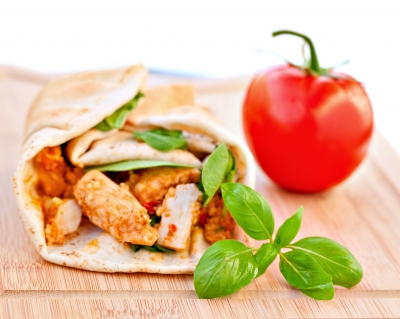Nutrition Facts Label
Nutrition Facts Label

Image courtesy of Serge Bertasius Photography at FreeDigitalPhotos.net
Grocery shopping can be very much like walking into a battlefield, where you are outnumbered by the enemy. Before you know it they surrounded you and you’re deep in enemy territory. Everywhere you look there is nothing but piles and piles of food. What do all these products have in common?
Nutrition Facts Label
They’re all claiming to offer health benefits their competitors cannot. However, you should be wary of the nutrition facts label. Sometimes the presented information can be misleading. Let’s look at a few common phrases used on everyday grocery products.
“Fortified with Omega-3’s”: This common health phrase can be found on bread and cereal products that contain flaxseed or canola oil. The omega-3 ALA can be found in these two ingredients; however ALA is not easily absorbed into the body meaning that it is not of much use. More easily absorbed forms of omega-3 are EPA and DHA found in fish. Some products will contain EPA, DHA and ALA, but even with this combination the amount in each serving would not be enough to make a difference.
“100% Vitamin C”: Vitamin C is not as hard to come by as some other vitamins. Eating one serving or two of a vegetable or fruit will probably give you what you need. Purchasing overpriced products because they are 100% Vitamin C is not necessary.
“Made with Whole Grains”: The product may have whole grain, but the amount of whole grain is uncertain. You may think you’re eating whole grain bread, but in reality only 10% or less could actually be whole grain. Best advice is to buy products that have “whole grain” or “whole wheat flour” listed as their first ingredient. “Unbleached whole wheat” is just another dressed up word for “white flour.”
“With Added Flour”: Today many products contain insoluble fiber which help a person’s bowel movements, but they usually are lacking soluble fiber which can lower cholesterol.
“Immunity Boosting”: Products may have antioxidants; however, there is not an adequate amount of research to suggest that these antioxidants (in supplemental form) can stop conditions such as cancer or the common cold. To gain any benefit from these antioxidants extremely large amounts have to be consumed, much more than that amount found in an immune boosting bottle of water.
“Made With/From Real Fruit”: Sure these products may be made with real fruit, but the amount of that fruit is minimal and usually comes in the form of pear concentrate or fruit bits mixed with sugar and oils. The produce section is your best chance.
So a nutrition facts label can be very deceiving, however, if equipped with the right knowledge the label can be demystified. Remember also that it is always best to go for the real thing instead of a substitute ( an apple instead of an apple flavored snack). A nutrition facts label doesn’t have to be the enemy if you don’t allow it to.


